LFC.SUpporters
You'll Never Walk Alone
Anfie ldindex com
Liverpool’s Konate still a target for two European powerhouses

Liverpool find themselves in an uncomfortable but familiar position. A core player, central to recent success, is approaching a contractual crossroads while Europe’s elite circle with intent. According to Caught Offside, uncertainty now surrounds Ibrahima Konaté, with the French centre back yet to commit to a new deal as Paris Saint-Germain and Real Madrid intensify their interest.
Konaté’s current contract runs until the summer of 2026, yet his reluctance to extend has “set off alarm bells at Anfield,” prompting Liverpool’s hierarchy to act sooner rather than later. This is not a player easily replaced. When fit, Konaté has been integral to Liverpool’s defensive balance, forming a powerful and complementary partnership with Virgil van Dijk that blends physical dominance with recovery pace.
That context explains why sporting director Richard Hughes and head coach Arne Slot are already weighing contingency options. Liverpool are not panicking, but they are planning.
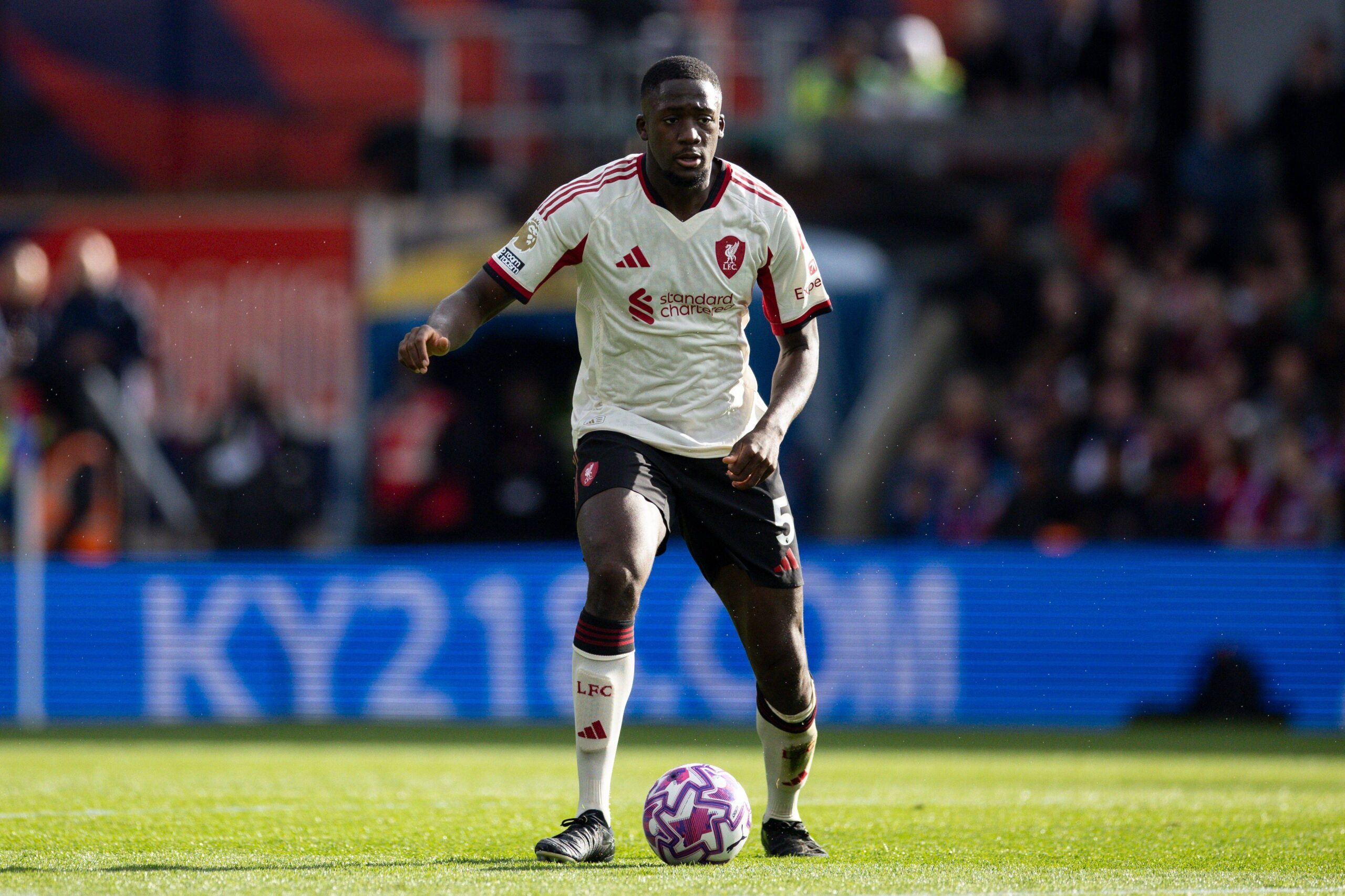 Photo IMAGO
European heavyweights circle Konaté
Photo IMAGO
European heavyweights circle Konaté
The external pressure is significant. Caught Offside report that “PSG are long-time admirers of Konaté, viewing him as a natural successor to Marquinhos, while Real Madrid have placed him on their defensive shortlist for 2026 as they look to refresh their backline, sources close to the agents industry have informed CaughtOffside.”
That wording matters. Both clubs are thinking long term, and both can offer stature, trophies, and financial muscle. For Liverpool, the concern is not immediate loss but leverage. As contract time ticks down, the balance of power can shift quickly.
With Liverpool’s defensive rebuild already described as “overdue,” Konaté’s hesitation risks accelerating recruitment plans that may otherwise have been phased in more gradually. Van Dijk remains influential, but succession planning at centre back cannot be delayed indefinitely.
Jacquet emerges as long term solutionAt the top of Liverpool’s internal shortlist sits Jérémy Jacquet of Rennes. At just 20, the French defender represents potential rather than polish, yet Liverpool’s interest is described as extensive and deliberate. Caught Offside note that Jacquet “has been extensively scouted by Liverpool this season,” with analysts particularly impressed by his composure and leadership qualities.
There is confidence that under Slot’s guidance, Jacquet could develop into “a world-class operator.” Sources close to Rennes suggest Liverpool scouts have attended multiple Ligue 1 fixtures, a sign this is not speculative interest but structured assessment.
Guehi and Schlotterbeck offer contrasting profilesMore immediate readiness is found in Marc Guéhi. The Crystal Palace defender offers Premier League experience, leadership, and homegrown status, all attractive traits. At 25, Guéhi is viewed by Liverpool as “a ready-made partner for Van Dijk,” and with the England international reportedly open to a new challenge, conditions may soon align.
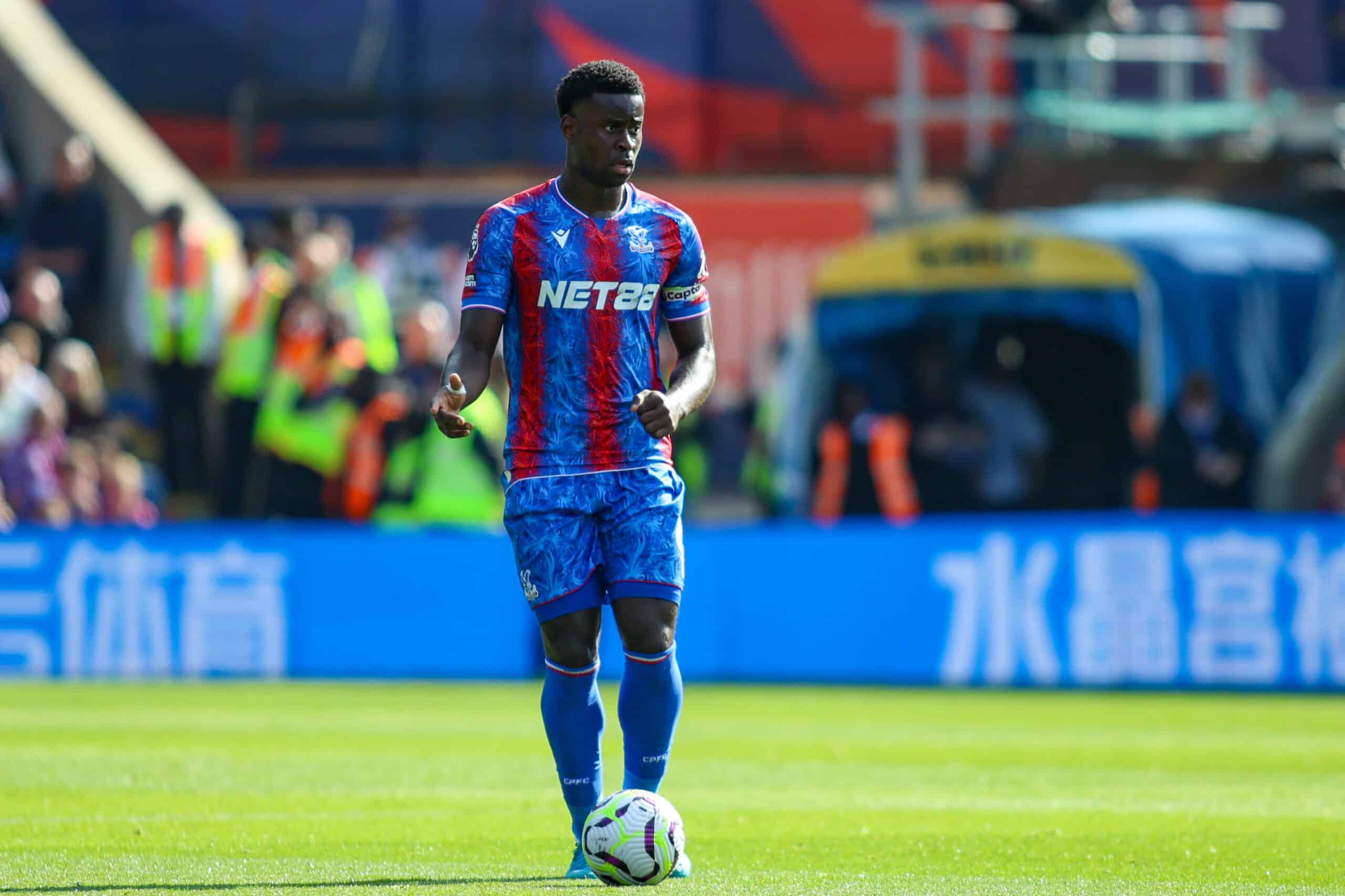 Photo: IMAGO
Photo: IMAGO
Completing the trio is Borussia Dortmund’s Nico Schlotterbeck. The 26-year-old left footed centre back is known for his comfort in possession and confidence stepping into midfield areas, traits well suited to Slot’s high pressing and build up focused approach. Caught Offside point to “ongoing contract issues between the player and Dortmund,” which have not gone unnoticed at Anfield.
Each option reflects a different response to the same problem, future proofing Liverpool’s defence in an increasingly competitive market.
Liverpool still prioritise extensionDespite all this groundwork, Liverpool’s preference remains clear. “Liverpool are still hopeful of keeping Konaté.” Internally, he is viewed as a cornerstone of the next defensive cycle, particularly as Van Dijk edges closer to the latter stages of his career.
Sources insist there is “no immediate panic,” but also acknowledge that “the upcoming months will be decisive.” If no agreement is reached before the summer window, Liverpool are expected to act decisively, rather than risk drift.
In elite squad building, preparation often matters more than reaction. Liverpool’s handling of Konaté’s situation will reveal how far the club has evolved under Slot and Hughes.
Our View – Anfield Index AnalysisKonaté has become one of those players fans almost take for granted, dominant on his day, quick enough to cover space, and perfectly suited to European football’s physical demands. The idea of losing him before his peak would feel like a failure of timing rather than ambition.
That said, there is trust in the current structure. The fact that Liverpool have a three man shortlist, blending youth, Premier League experience, and European pedigree, suggests this is not a rushed reaction.
Supporters will hope Konaté signs. Continuity alongside Van Dijk, even as roles gradually shift, feels like the ideal path. Yet fans also recognise that modern football rarely allows sentiment to dictate outcomes. If Konaté is unconvinced, Liverpool must protect the squad’s spine.
What matters most is decisiveness. Drifting into a final contract year without clarity would feel avoidable. Whether through renewal or replacement, Liverpool need resolution, not reassurance.
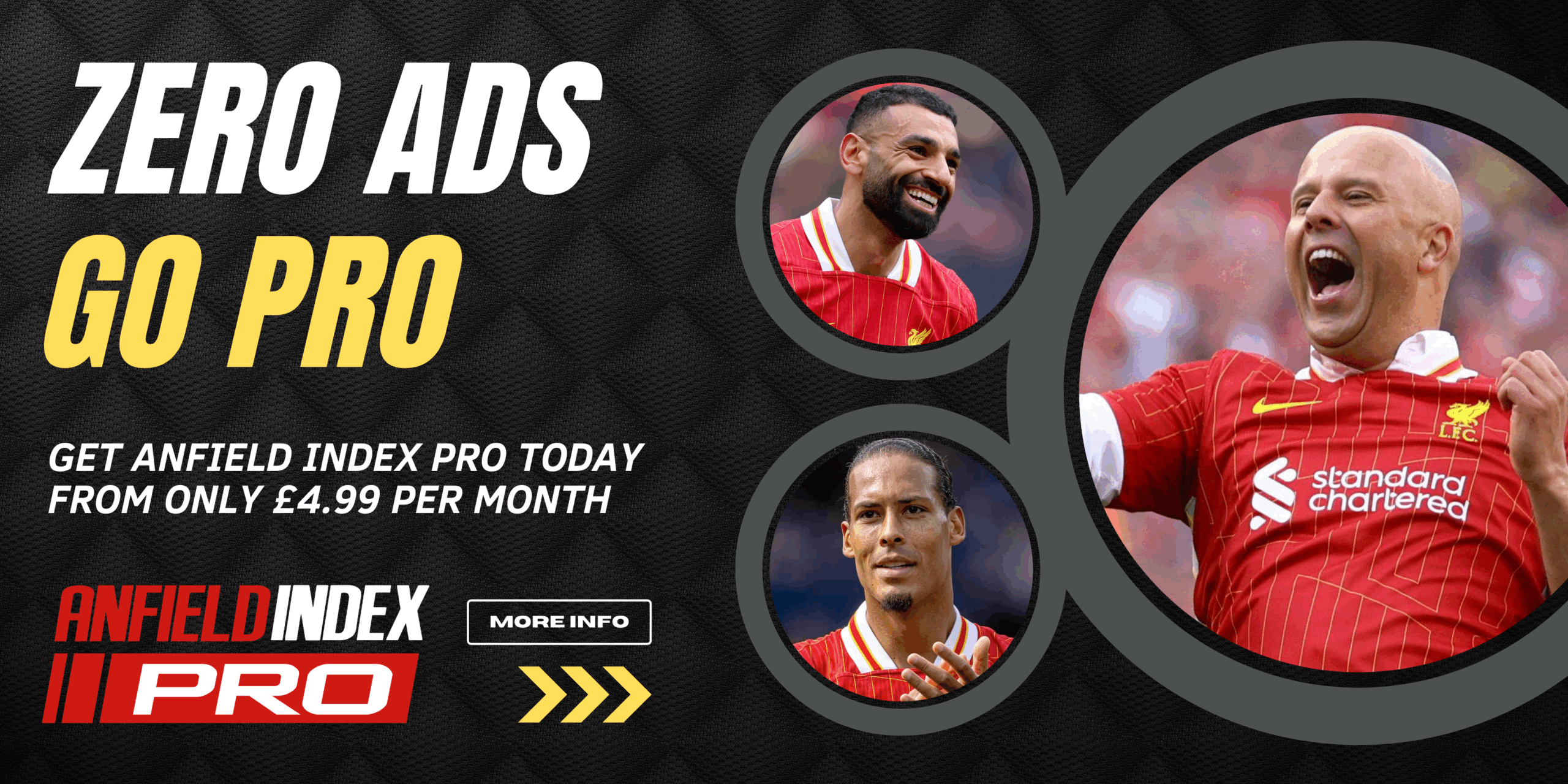
Liverpool eye Semenyo move as Bournemouth successor found

The future of Mohamed Salah at Liverpool has rarely felt so uncertain. According to Anfield Watch, the reaction to the Egyptian’s recent interview at Leeds has intensified belief inside and outside the club that his time at Anfield is nearing its conclusion. Despite being under contract until 2027, “it looks certain that Salah will be leaving the Premier League champions before his contract expires”.
That sense of finality matters. Salah’s influence on Liverpool’s modern history is profound, and replacing him requires more than simply signing a winger. With the forward now away at the Africa Cup of Nations, attention turns to Liverpool’s sporting director, with “Richard Hughes expected to find a solution before the end of the international showpiece event”.
Potential destinations for Salah are already being framed. Saudi Arabia remains a strong option, while San Diego FC in MLS are also mentioned as a possible next chapter. Wherever Salah goes, Liverpool’s hierarchy face a defining decision, one that could shape Arne Slot’s second title defence and beyond.
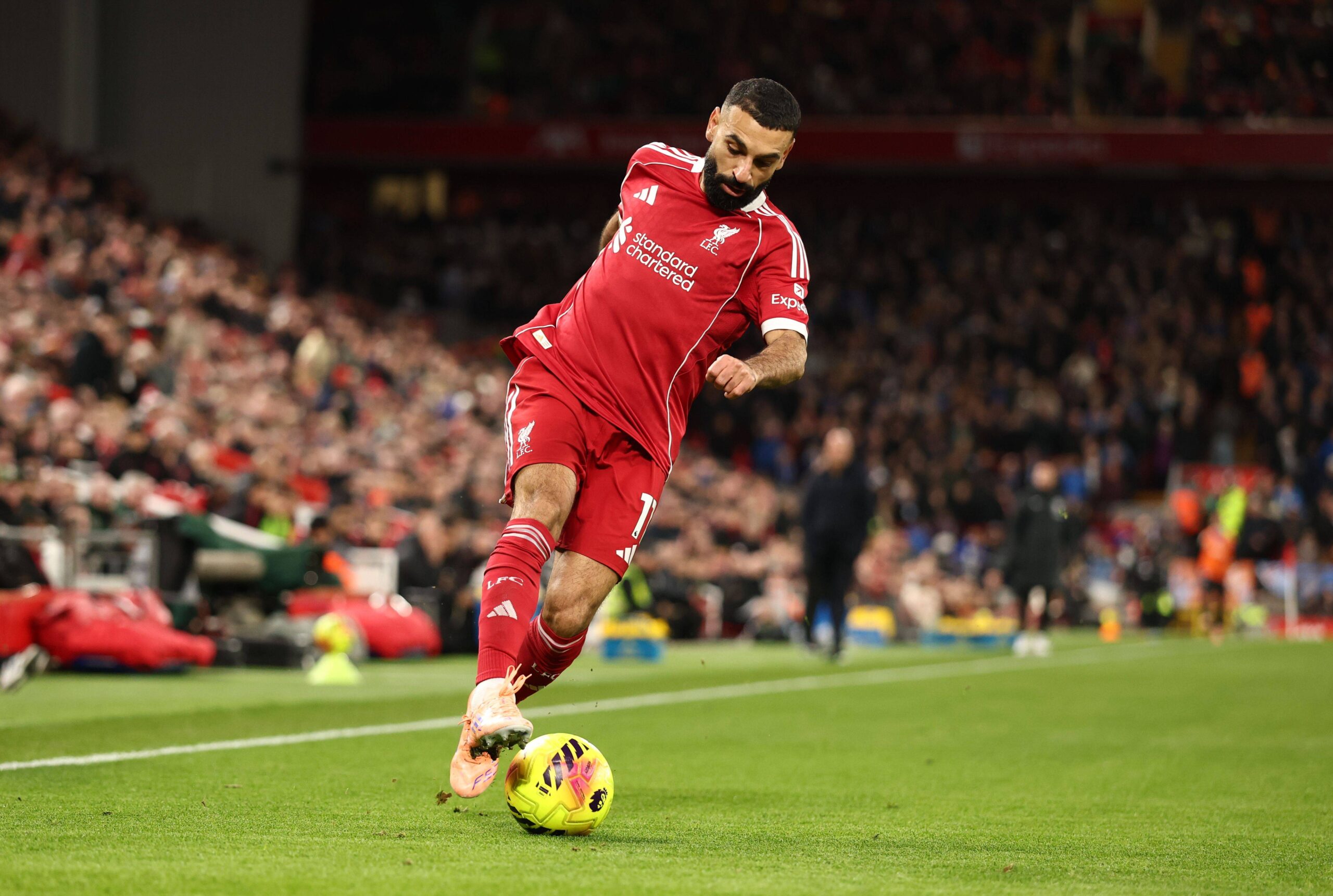 Photo: IMAGO
Semenyo profile fits Slot vision
Photo: IMAGO
Semenyo profile fits Slot vision
Anfield Watch suggest that Liverpool’s search for a successor is already taking shape. Links to Michael Olise and Yan Diomande have circulated, but the report argues that “perhaps the best fit right now would be Antoine Semenyo”. The Bournemouth attacker has developed rapidly since arriving from Bristol City, and his profile aligns neatly with Slot’s demands for intensity, flexibility, and direct running.
Semenyo’s situation is clear. “The 25-year-old Bournemouth attacker will have a £65m release clause activated in the January transfer window.” That clause brings urgency and competition, particularly given the calibre of clubs circling. As Anfield Watch state, “Liverpool are expected to be in the chase for the Ghana international’s signature with the versatile forward contracted to the Cherries until 2030.”
There is no suggestion this will be straightforward. A report cited by Anfield Watch adds that “while Manchester City are currently positioned as frontrunners Liverpool are prepared to match their interest every step of the way.” Tottenham also remain relevant, having “came close to agreeing a deal for Semenyo last summer”.
Bournemouth moves signal acceptance of changePerhaps the strongest indication that a transfer is realistic comes from Bournemouth themselves. Anfield Watch highlight that the South Coast club are already planning for life after Semenyo. “And now there are solid indications that Bournemouth are stepping up preparations for Semenyo’s departure.”
The mechanism is already being explored. “The South Coast club will make a move for Sporting CP’s Geovany Quenda who will join Chelsea in summer 2026.” The pathway is clear, with the teenager potentially loaned out immediately. As the report explains, “The Cherries are eyeing replacements like Sporting’s Geovany Quenda, who will join Chelsea in the summer but could be loaned straight out.”
That forward planning reflects Bournemouth’s acceptance that Semenyo may be lost to a bigger stage. His rise has been steep since Bournemouth paid “around £10m for Semenyo in 2023 when he left Bristol City”. Crucially for Liverpool, that deal was overseen by Richard Hughes, now tasked with reshaping Anfield’s attack.
 Photo: IMAGO
Salah succession becomes defining test
Photo: IMAGO
Salah succession becomes defining test
The language used around Semenyo is telling. “Arne Slot envisions Semenyo as Mohamed Salah’s long-term heir,” the report reads, before adding, “The Egyptian icon might be on the way out of Anfield sooner than anyone had anticipated just a few weeks ago.”
That framing speaks to urgency rather than long term theory. Liverpool are not simply planning for an eventual decline, they are bracing for an imminent transition. Slot’s first season delivered the Premier League title, but sustaining that success requires evolution without losing edge.
Semenyo would not arrive as a like for like replacement in style or stature, but Liverpool have rarely replaced icons directly. Instead, they reconfigure. The coming weeks, particularly while Salah remains away on international duty, may define how bold Liverpool are prepared to be.
Our View – Anfield Index AnalysisFor Liverpool supporters, Salah leaving, particularly before his contract expires, feels like the end of an era rather than a routine transfer. Fans understand cycles, but the timing, especially after a title winning season, sharpens the emotional edge.
Semenyo is an intriguing name rather than an obvious one. There will be supporters who question whether a £65m release clause represents value, yet many will also recognise the logic. He fits the age profile, knows the league, presses aggressively, and crucially offers versatility across the front line. Under Slot, those traits matter more than reputation alone.
There is also trust in Richard Hughes. His role in bringing Semenyo to Bournemouth adds confidence that this is not a scattergun link. If Hughes believes the winger can scale up again, many fans will follow that judgement.
What supporters will want above all is clarity. If Salah’s departure is inevitable, decisive action matters. Drifting would feel worse than change. Semenyo may not be the Egyptian King, but Liverpool have thrived before by backing the next phase rather than clinging to the last.

Liverpool keen on £88m La Liga star

Real Madrid rarely act without a long view, particularly when it comes to elite midfield talent. Yet the latest reporting from TEAMtalk suggests a notable shift in thinking at the Bernabeu, one that could have significant ramifications for Liverpool under Arne Slot. Eduardo Camavinga, once viewed as a cornerstone of Madrid’s next era, is now a player whose long term future appears uncertain.
According to TEAMtalk, Madrid are open to cashing in on the France international in 2026 if his physical issues continue. That stance alone reframes Camavinga’s situation, especially given Liverpool’s long standing admiration for the midfielder and their need to refresh the engine room following recent title success.
Camavinga availability alters Liverpool midfield thinkingCamavinga’s absence against Alaves, following his ankle injury that also ruled him out against Manchester City, is more than a short term concern. As reported, “Camavinga’s injury problems since last season have led Madrid to ‘seriously consider selling him’.” That is a striking admission for a club that usually shows extreme patience with young talent.
The numbers underline Madrid’s frustration. Camavinga made just 11 LaLiga starts in the 2024/25 campaign and has managed only four starts in the league so far this season. Availability, not ability, has become the defining issue. TEAMtalk note that if matters do not improve, Madrid will “sacrifice” the midfielder for €100million, with the headline from Defensa Central reading, “Real Madrid are already considering selling Camavinga”.
For Liverpool, this context matters. “Madrid’s reported stance on Camavinga will come as a boost to Liverpool, who have been linked with the 23-year-old by two separate sources.” That boost reflects timing as much as talent. Slot’s Liverpool need tactical flexibility and durability in midfield, and Camavinga, if managed correctly, fits the technical and athletic profile Slot prefers.
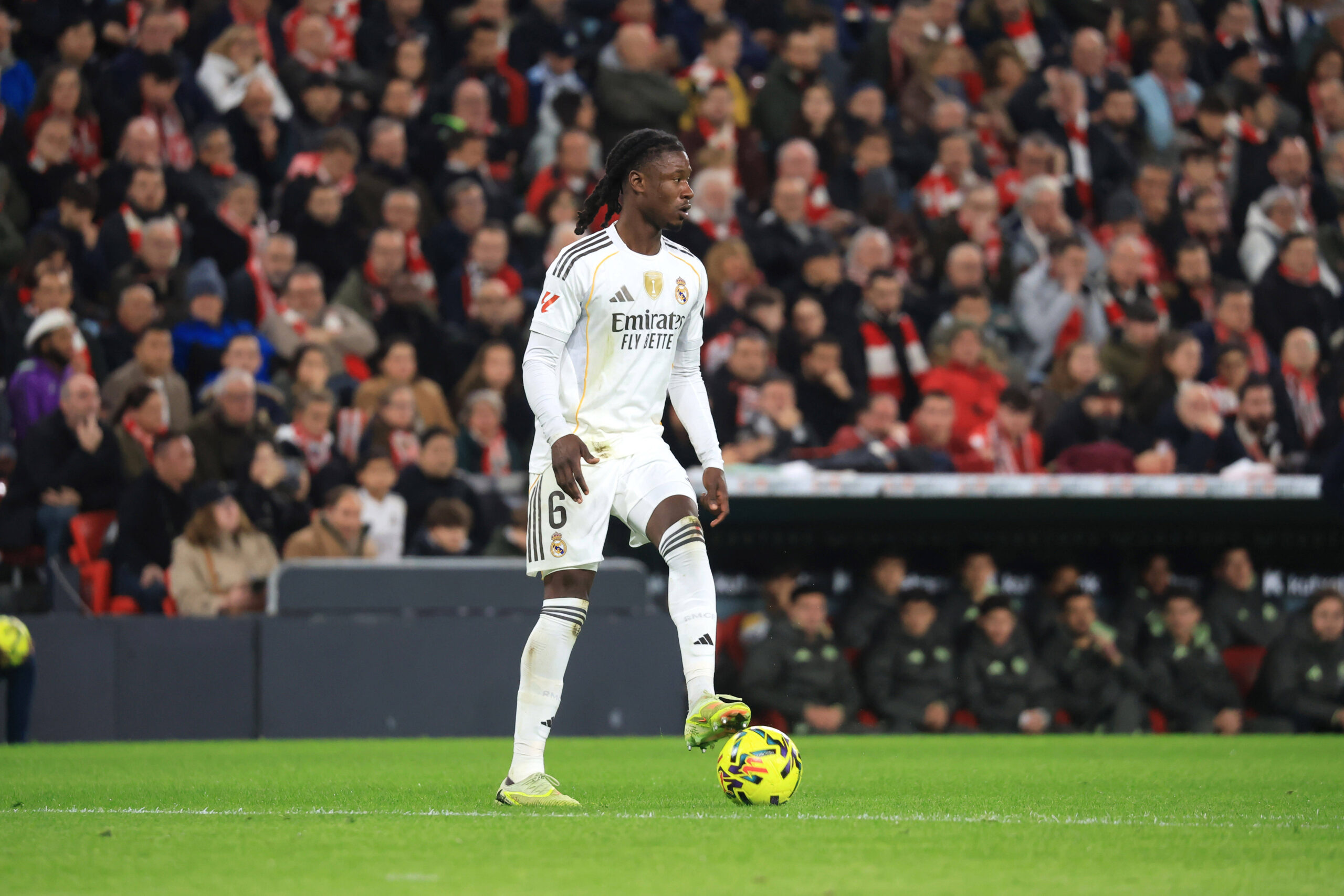 Photo: IMAGO
Slot links reinforced by Spanish and Premier League sources
Photo: IMAGO
Slot links reinforced by Spanish and Premier League sources
The interest is not speculative noise. TEAMtalk reference E-Noticies, who reported that Real Madrid are “concerned about his physical fragility and the fact that he has not yet established himself as a starter” and are willing to sell him to Liverpool. That concern aligns with what has been visible on the pitch over the last 18 months.
CaughtOffSide further strengthened the narrative by claiming that Liverpool are “expected to table a €60m (£52.7m, $70.4m) bid” for Camavinga. That valuation gap between Madrid’s €100m expectation and Liverpool’s reported bid frames what could become one of the defining negotiations of the 2026 window.
Madrid future planning extends beyond midfieldTEAMtalk’s report goes further, painting a picture of Madrid planning aggressively across multiple positions. Graeme Bailey reports that Madrid are tracking Bayern Munich winger Michael Olise as a potential successor to Vinicius Junior, with both Vinicius and Rodrygo potentially leaving in 2026.
Olise’s camp provided telling insight. A source told Bailey, “Michael knows there is interest from around Europe. As it stands, there is no hurry for him to come back to England, but it is not an avenue he would discount.” The source added, “He is loving life at Bayern Munich as it stands. His game has gone to the next level in Germany and playing with Harry Kane.” Finally, the scale of any move was made clear, “To get him out of Bayern, it is going to take one of the world’s top clubs to put together a massive deal to land him.”
Madrid are also casting an eye on Manchester United defender Diogo Dalot. TEAMtalk understand that Los Blancos hold a long term interest in the Portugal international, valuing his ability to operate on either flank, particularly with Dani Carvajal now 33, despite having signed Trent Alexander Arnold in 2025.
Madrid turbulence creates transfer leverageUnderlying all of this is uncertainty around the Madrid managerial situation, with pressure mounting on Xabi Alonso ahead of their trip to Alaves. Florentino Perez is never shy of decisive action, and squad reshaping often accompanies managerial change. That volatility could benefit clubs prepared to move early and decisively.
Liverpool, under Slot, have already shown they are willing to strike with conviction when the right profile becomes attainable. Camavinga’s situation, as outlined by TEAMtalk, suggests a rare alignment of availability, need, and opportunity.
Our View – Anfield Index AnalysisCamavinga has always felt like a player Liverpool admire from afar, the sort of midfielder you watch in Europe and wonder how he would look in red.
Arne Slot’s title winning side was built on control, rotation, and physical reliability. That is why the phrase “physical fragility” stands out so sharply. Liverpool’s recruitment model under Slot cannot afford passengers, yet it has also shown confidence in managing elite talent with the right medical and tactical framework. If the club believe Camavinga’s injuries are manageable rather than chronic, a €60m bid could look inspired in hindsight.
There is also a sense that Madrid’s wider uncertainty plays into Liverpool’s hands. When Madrid hesitate, others must act. Slot’s Liverpool are no longer rebuilding, they are refining, and adding a 23 year old Champions League proven midfielder could future proof the squad for the next cycle.
Supporters will rightly be cautious, but this feels like one of those moments where timing matters more than perfection. If Madrid blink first, Liverpool should be ready.

Liverpool fans replace panic with persepctive after crucial Brighton win
 Liverpool steady ship against Brighton
Liverpool steady ship against Brighton
Liverpool’s 2–0 victory over Brighton may not have solved every structural issue facing Arne Slot’s side, but it offered something just as valuable: clarity. After weeks of tension, debate and noise, the result – and performance – provided a moment of collective exhale. A clean sheet, decisive goals and renewed balance allowed discussion to shift from crisis management to cautious optimism.
Speaking after the match, Gags Tandon framed the win in simple but telling terms. “It’s been a long time coming – we’ve actually won a Premier League game, and it feels like normality might finally be creeping back in.” For a Liverpool side that had made life unnecessarily difficult in recent weeks, that sense of normality mattered almost as much as the points themselves.
[embedded content]
Perspective around Liverpool’s key figuresMuch of the pre-match narrative centred on Mohamed Salah and the fallout from recent events, but on the pitch the forward responded with industry and influence. Jack Mcindoe was clear in his assessment. “Mo didn’t look like a man checking out – he worked his socks off and could’ve had a hat-trick of contributions.”
Tandon echoed that sentiment while acknowledging the broader context. “At the end of the day, Liverpool always comes first, but that doesn’t mean you stop caring about what Mo has given this club.” It is a nuanced position, one shared by many supporters: loyalty to the club, balanced with respect for a player whose output has shaped an era.
The reaction to Salah has exposed divisions among fans, something Tandon addressed directly. “The fanbase has been completely divided, and that’s fine – people are allowed to sit on whichever side of it they’re on.” What Liverpool needed against Brighton, however, was unity on the pitch, and that was delivered.
Defensive improvement against BrightonIf Liverpool are to build momentum, defensive stability will be central to it. The clean sheet against Brighton represented progress, particularly after a run of games defined by avoidable concessions. “Clean sheets are so important – we’ve put ourselves under pressure all season by conceding soft goals,” said Tandon.
Mcindoe agreed, highlighting how much calmer the contest felt as a result. “I was just happy we didn’t concede, because that’s been the big problem for us lately.” Brighton created moments, but Liverpool managed the game with greater control, protecting key areas and seeing out dangerous spells without panic.
There was also recognition that fortune occasionally played its part. “We were lucky not to concede, but sometimes you earn a bit of luck when you stick to it defensively,” Mcindoe noted. For Liverpool, that resilience marked a step forward rather than papering over cracks.
Attacking signs and squad balanceAt the other end of the pitch, Liverpool’s attacking structure looked sharper, even if efficiency can still improve. Mcindoe singled out the striker’s contribution. “Hugo’s in great form right now – four goals in two league games is exactly what Liverpool need.” His opener set the tone, while the second goal underlined growing confidence.
There was also praise for Curtis Jones, whose midfield performance helped Liverpool control transitions. “Curtis Jones was outstanding today – that performance really summed up what he brings to this team,” Mcindoe said.
For Tandon, context remains essential. “Form is temporary, class is permanent – and there are some genuinely brilliant footballers at this club.” With Liverpool now entering a period of lighter scheduling, there is an opportunity to reset physically and tactically. “We’re one game a week now, so there are no excuses for players not being sharp or fit when January comes,” he added.
Calm replaces noise at AnfieldBeyond tactics and individuals, the win against Brighton felt significant for emotional reasons. Liverpool have been navigating criticism, speculation and internal debate, but the performance offered a reminder of shared purpose. “If people make mistakes, you point it out, but you also have to let them redeem themselves – that’s how people grow,” said Tandon.
Mcindoe kept his conclusion straightforward. “Another clean sheet, another win – just keep it going now, that’s the main thing.” Liverpool are not suddenly flawless, but against Brighton they looked composed, united and capable of improvement.
Whether this marks a turning point remains to be seen, but for now, Liverpool have breathing space. As Tandon summed it up succinctly, “Two clean sheets, two wins in a week. Who even are we anymore?”

Liverpool fans sure about Salah’s future after win over Brighton
 Post-match context at Anfield
Post-match context at Anfield
Liverpool’s 2–0 win over Brighton should have been a straightforward story about three points and control at Anfield. Instead, it became a wider conversation about stature, legacy and uncertainty, as reflected in a thoughtful and revealing post-match discussion on Anfield Index featuring Trev Downey, Dave Hendrick and Mo Chatra. Their exchange captured both the immediate reaction to the result and the broader implications surrounding one of the Premier League’s defining figures.
[embedded content]
Hosting the show from rural Ireland, Trev Downey framed the conversation by acknowledging that the scoreline, while important, was not the only issue demanding attention. “Irrespective of the result today, let’s just deal with this story because it is the big story, the elephant in the room,” Downey said, setting the tone for a discussion that went well beyond Liverpool’s tactical execution against Brighton.
The match itself saw Liverpool manage the contest effectively, but events were shaped by an earlier-than-expected substitution. That moment altered both the rhythm of the game and the narrative in the stands. As Downey put it, the focus quickly shifted to “the contribution today and your feelings on where this goes from here”.
 Mohamed Salah of Liverpool Liverpool v Brighton and Hove Albion, Premier League, Football, Anfield, Liverpool
Reaction in the stands and on the pitch
Mohamed Salah of Liverpool Liverpool v Brighton and Hove Albion, Premier League, Football, Anfield, Liverpool
Reaction in the stands and on the pitch
Mo Chatra highlighted how the atmosphere inside the ground provided an insight into supporter sentiment. “Some of them tried to get the Mo Salah chant going,” he observed, “and it seemed to get a bit of a lukewarm reaction.” In Chatra’s view, that response reflected lingering frustration following comments made after the previous fixture.
From a footballing perspective, however, Chatra was clear that the performance itself stood up to scrutiny. “I thought his performance overall was pretty decent,” he said, noting that while there were moments of frustration, “he’s still a threat and he is the biggest star in this Premier League.”
That balance between expectation and delivery has become a recurring theme. Chatra acknowledged the imperfections but stressed the wider context, adding that any potential departure would represent more than a squad change. “If this is the end, it’s not only a loss for Liverpool, it’s a loss for the Premier League and society at large because that’s the impact that he’s had.”
Legacy beyond LiverpoolDave Hendrick expanded on that point, placing the situation within a longer historical and cultural arc. “When people say Mo Salah is egotistical, they’re right – but all great players are egotistical,” Hendrick explained. “It’s part of what greatness is.”
Hendrick argued that the current turbulence is partly rooted in unfamiliar territory. “This is the first time in his career where he’s been playing regularly while playing badly,” he said, suggesting that confidence and circumstance have collided at an awkward moment.
Crucially, Hendrick rejected conspiracy-driven narratives around selection decisions. “I know Christmas is coming, but I’m not buying the tinfoil hats,” he remarked, dismissing suggestions of internal agendas. Instead, he pointed to a more pragmatic club stance, where senior players retain agency over their futures.
The broader influence, Hendrick argued, is indisputable. “Ultimately, Mo Salah is one of the most important players in the history of football because of what he’s done to develop football in the Arab world,” he said, highlighting the pathways opened for players previously overlooked by Europe’s elite leagues.
What comes next for LiverpoolDowney steered the conversation back towards the immediate future, questioning whether this chapter was nearing its conclusion. Hendrick’s answer was emphatic. “I don’t feel like it’s ended at all,” he said. “I don’t think he’s leaving in January. Mo will leave through the front door, not slip out a side door.”
That sentiment aligns with the club’s broader approach under the current structure. Senior figures are afforded respect, dialogue and control, rather than being pushed towards exits driven purely by timing or market value. As Hendrick explained, Liverpool are content to “park on a really strong platform because of what you have done for the club and what the club has done for you”.
For now, Liverpool move on from Brighton with three points secured and bigger questions still open. The football continues, but so too does the conversation about legacy, leadership and how elite careers are managed at the highest level.

Salah social media post fuels speculation
Mohamed Salah’s Anfield return against Brighton felt loaded with significance, not because of goals or headlines chasing records, but because of what followed the final whistle. As reported by Liverpool.com, the Egyptian forward lingered long after teammates had departed, soaking in chants that carried reassurance as much as admiration. Within hours, Salah shared that moment on social media, a subtle but pointed gesture after a turbulent week.
This was Salah back in the matchday squad seven days after his ill advised mixed zone comments at Elland Road, where he admitted he “no longer had a relationship with Liverpool head coach Arne Slot”. Those words sparked a frenzy, raising questions about harmony under a manager who had just delivered a Premier League title in his debut season.
Return Framed by Trust and TimingSlot’s handling of the situation was measured. Salah missed the trip to Inter Milan but returned at Anfield, entering early after Joe Gomez’s injury. The decision was framed firmly around footballing need rather than politics. Slot later explained, “It was an easy decision to put him in the squad and I’ve said many times before what has been said between the two of us, for me that stays between the two of us.”
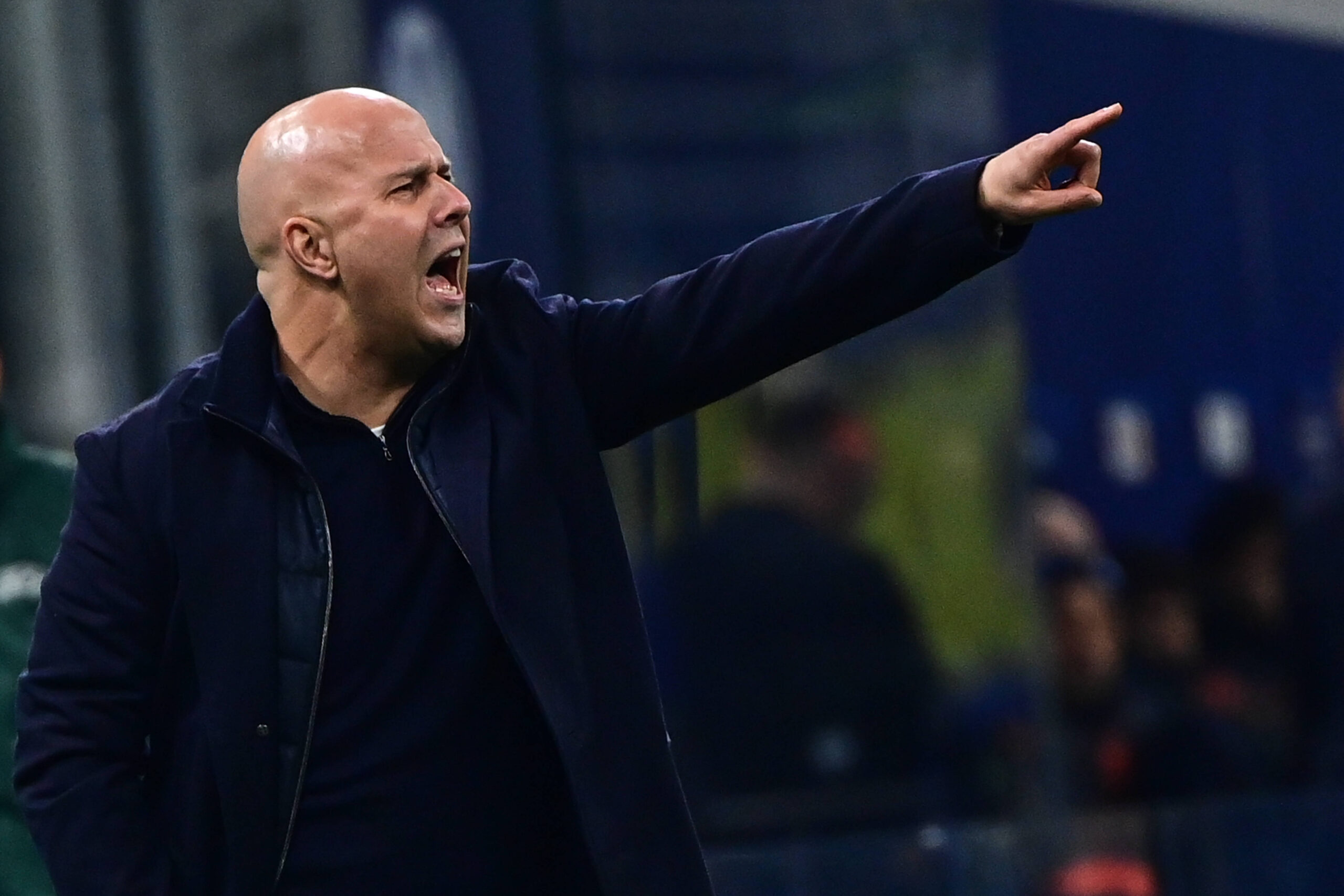
That clarity cut through a week of speculation. Salah repaid the faith with one of his sharpest displays of the campaign, directly influencing Liverpool’s control and tempo.
Performance That Shifted the NarrativeSlot’s post match assessment underlined why Salah remains indispensable. He told Sky Sports, “I think he was a threat. I think the first ball he touched he almost gave an assist to [Alexis] Mac Allister who squared it, I think, and maybe was a chance for him to shoot as well.
“He was constantly in the threat we had. It was pleasing to see but also not a surprise because he has done that many times in a Liverpool shirt.”
Salah’s assist from a corner for the 2-0 goal was another layer, highlighted by Slot as progress in a season where set pieces have often gone against Liverpool. “He assisted for the 2-0 for the corner kick which is also very nice for us,” Slot added.
Anfield’s Verdict Matters MostThe lasting image was not the assist, but Salah applauding supporters who refused to leave. Fans hope that shared moment “draws a line under a matter which has dominated the Premier League news agenda for the last week”, as Liverpool.com noted. In football, gestures often speak louder than statements, and this one carried weight.
— Mohamed Salah (@MoSalah) December 13, 2025
Our View – Anfield Index AnalysisFrom a supporter’s perspective, this felt like a reset rather than a reconciliation tour. Salah did not issue a public apology, nor did Slot demand one. Instead, both leaned into what matters at Liverpool, performance and connection with the crowd. The reaction inside Anfield was telling, there was no hesitation, no muted applause, just full throated backing for a player who has defined an era.
Slot deserves credit here. Dropping Salah for Inter showed authority, restoring him against Brighton showed pragmatism. Champions manage egos without feeding drama, and this episode hinted at a manager comfortable in his own skin.
For fans, the hope is simple. Keep this about football. Salah looked sharp, motivated, and engaged. If this episode sharpens focus rather than fractures trust, Liverpool benefit. The season is long, the margins are fine, and having Salah aligned with Anfield rather than headlines could yet prove decisive.
